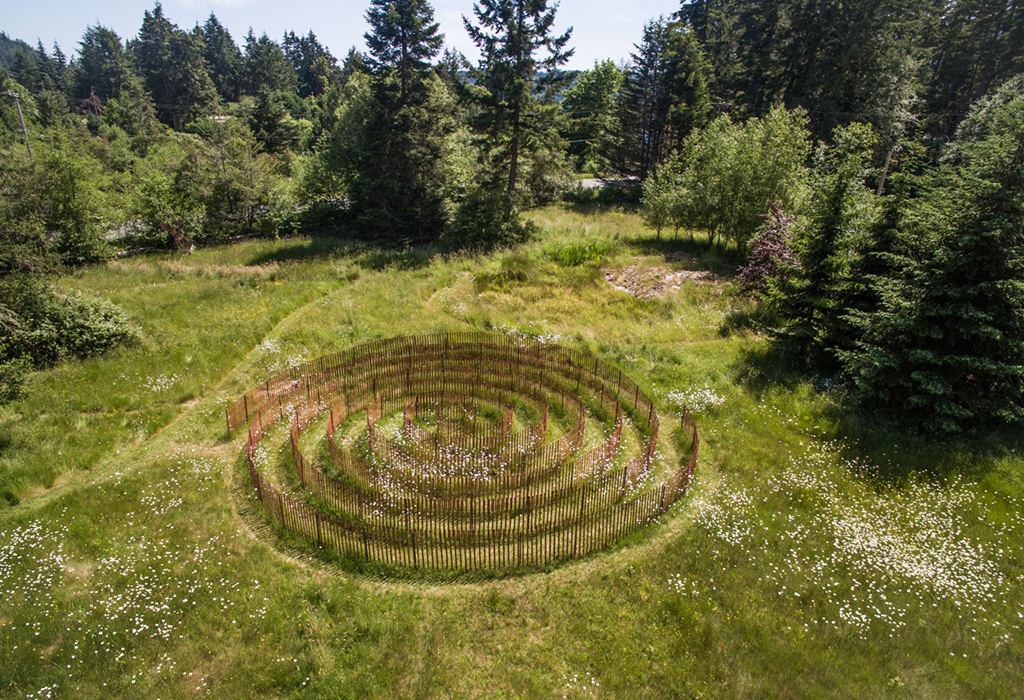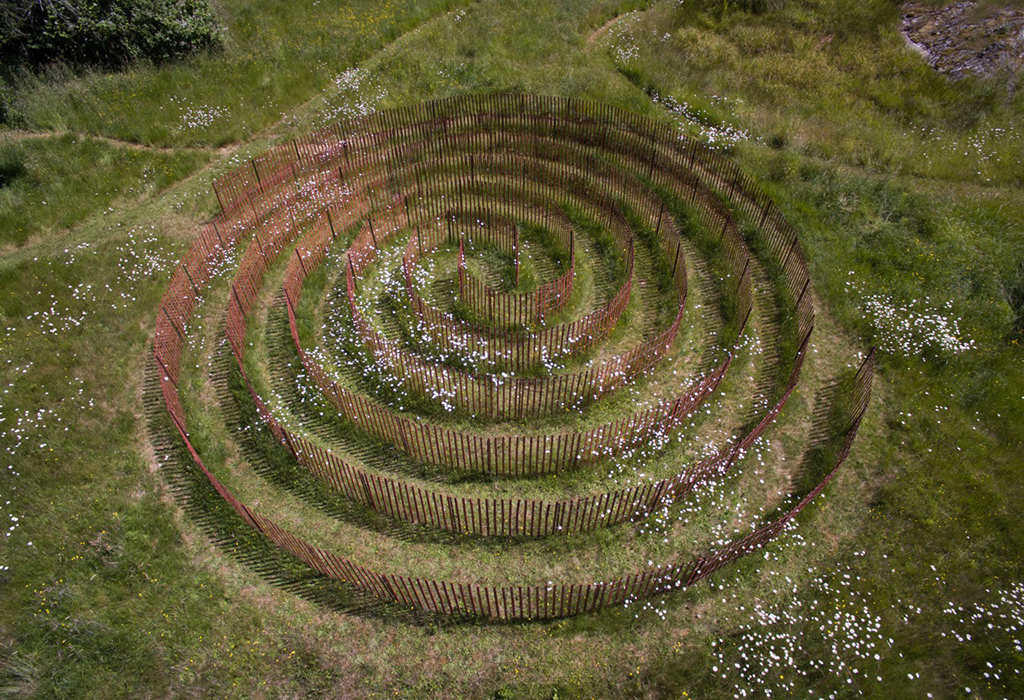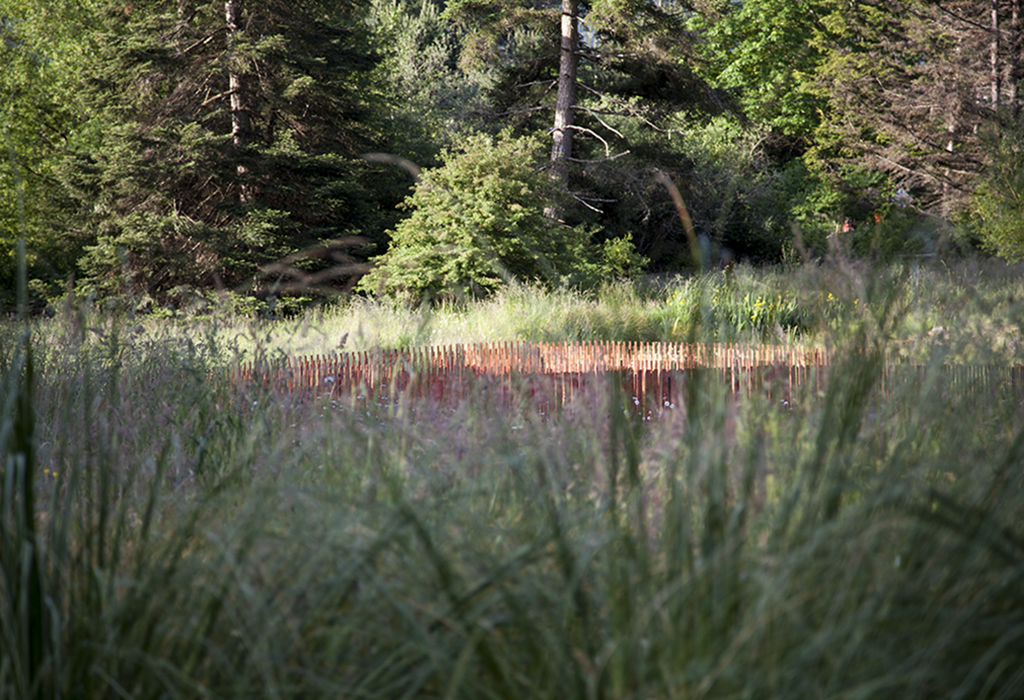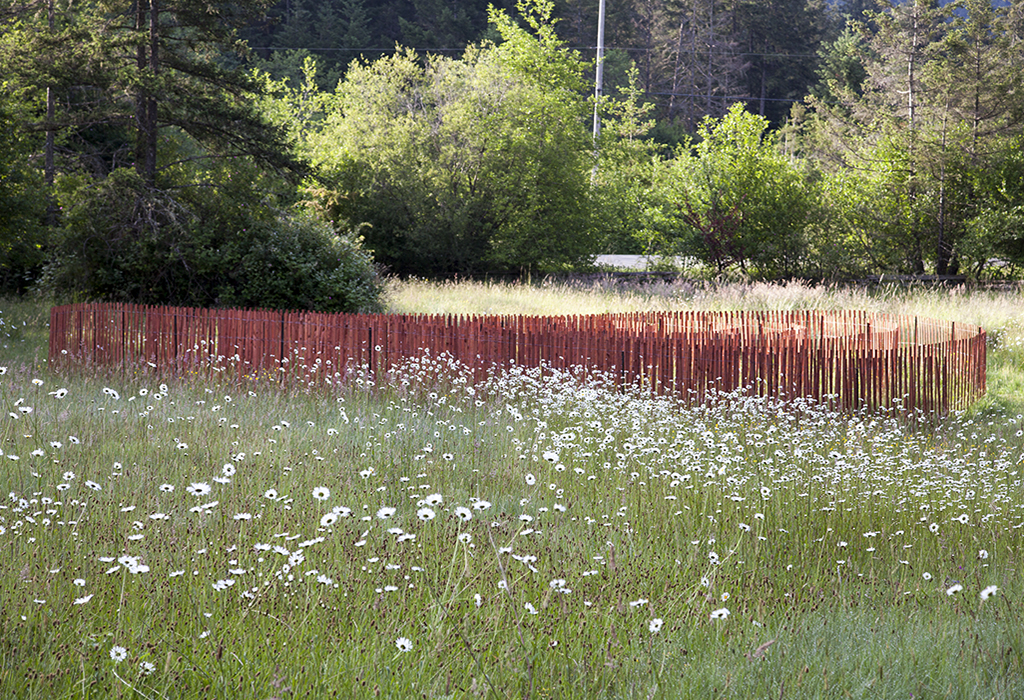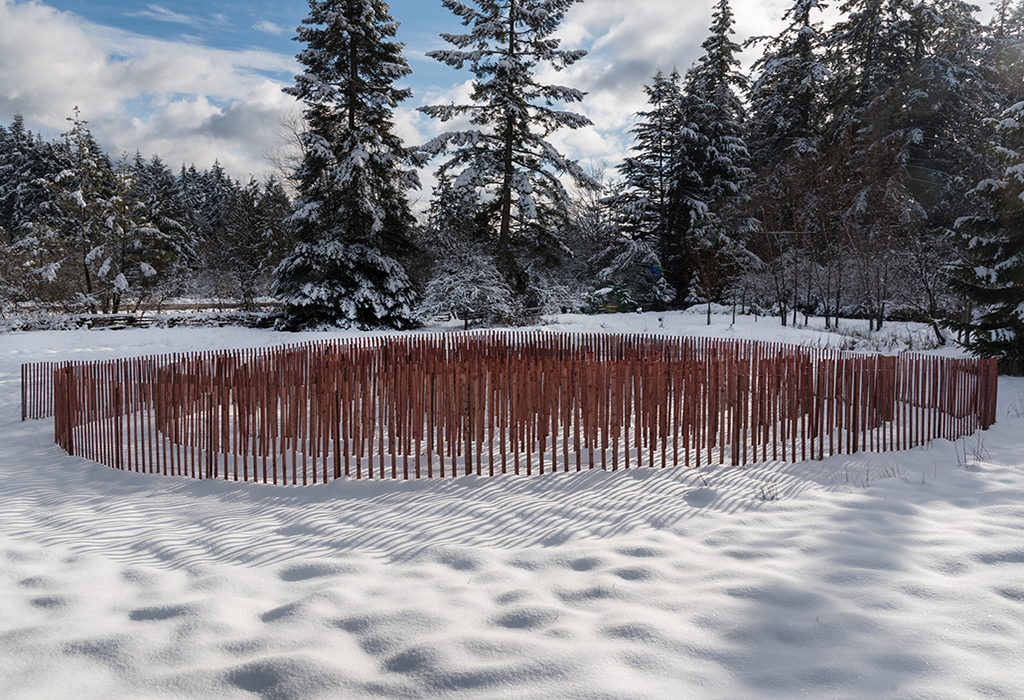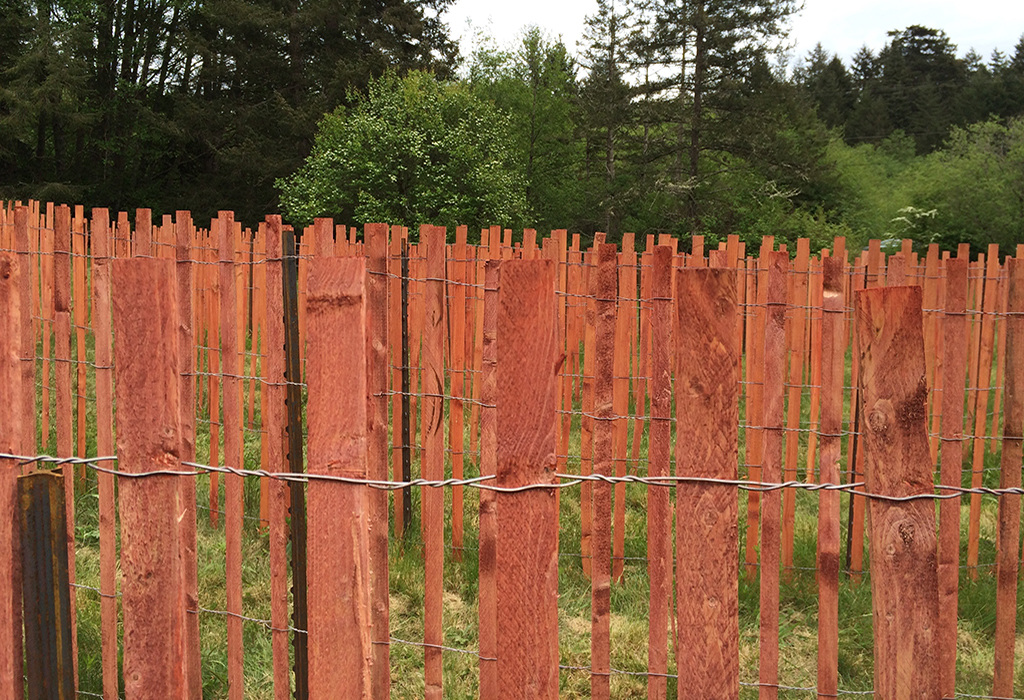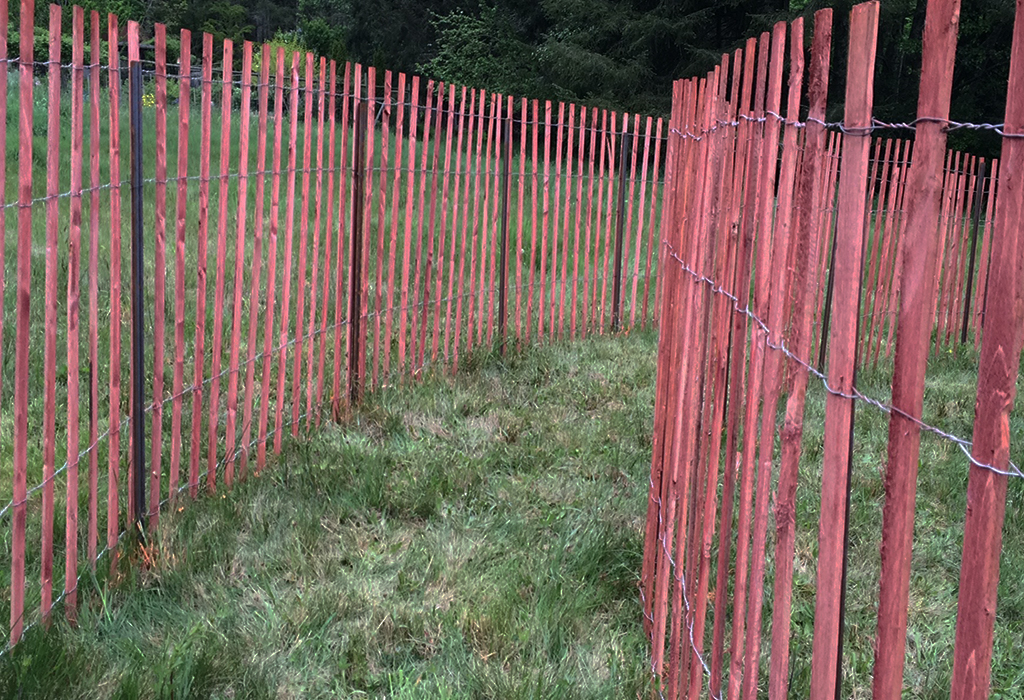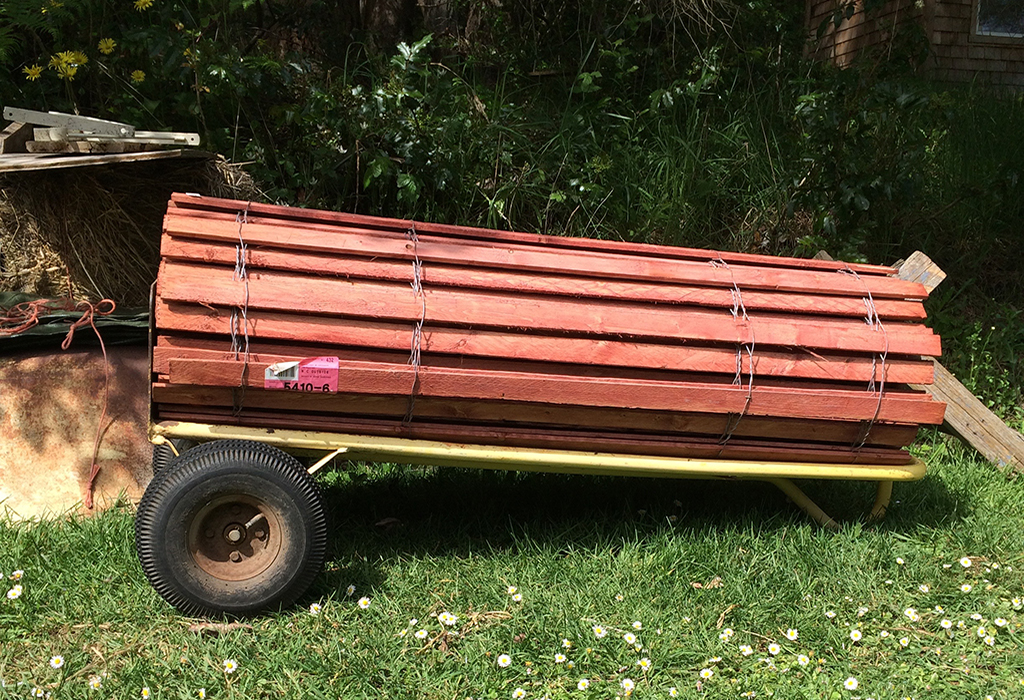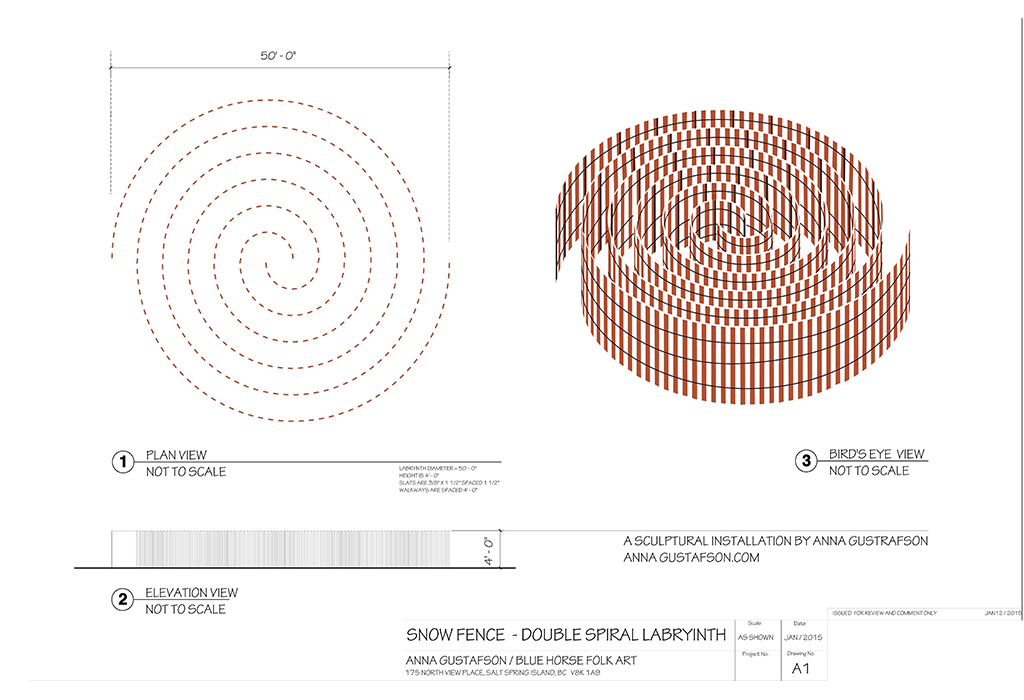SNOW FENCE
Snow Fence is a double spiral labyrinth*, 50’ in diameter and 4’ high, constructed of flexible and easily obtained snow fencing. Made of red-dyed wood slats, this iconic Canadian article creates a large, dramatic installation with minimal materials.
Snow Fence is inspired by the ball of red string that Ariadne gave to Theseus before he entered the Minotaur’s labyrinth. Unrolling the string as he made his way in, he knew that he would find his way out again, which freed his mind to focus on slaying the monster.
In this case the red snow fence is both the labyrinth and the red thread. However instead of creating danger, fear and anxiety, the never-ending pathways of Snow Fence inspire journeys of exploration and discovery. Each of the two entrances lead to the center which is neither a goal nor destination, but a turning point on the journey. From opposite sides, two people embark on a dialogue of discovery, traveling in their own spiral. Crossing paths in the middle, at journey’s end they realize that each completed where the other began. Through this shared experience, they perceive that though traveling on different paths, there is an equality and balance in their common humanity.
Deceptively simple and elegant, this installation is startlingly beautiful whether on green grass, white snow, red earth or grey sand. The open-slat structure reveals patterns of movement and casts shadows on the ground, changing as the sun crosses the sky. It engages, intrigues and inspires participants of all ages to walk along the generous 4’ wide walkway.
The construction of Snow Fence is an opportunity for community participation in the creative process. Though of great value as an art installation, once erected it is also a unique platform for actors, dancers, musicians and other performers to create their own work with and in response to the space created.
* "Beautiful!! Technically, however, the Snow Fence is not a labyrinth; rather, what I would characterize as mirrored spirals. In order to classify as a labyrinth, the design should contain at least two "switch-backs" or turns within the path where the walker changes rotational direction -- clockwise to counterclockwise or vice versa."
David Gallagher
Executive Director
The Labyrinth Society
Thoughts on Snow Fence
By Kristen Lewis
Snow Fence works on many levels: it is first-off a beautiful work of installation art, it's design complements the natural environment without over-taking it, stunning from all angles, including from above as seen from a bird’s eye view.
To be beautiful is enough. But Snow Fence is also more: it is an invitation to move, a way of “choreographing space” such that those who walk through Snow Fence are led down a pathway that is inherently peaceful, soothing, and conducive to reflection, creativity, and heightened perception. Snow Fence thus creates a new kind of space, an inviting commons where people can meet “outside the marketplace”---and people encounter each other differently here, thus paving the way for new modes of community-interaction, relationship building, and collaborative art-making.
Again, this would be enough. But Snow Fence is even more: it is also a unique reference to the mythic dimension, its red fence is a nod to the red string Ariadne offered to Theseus to help him find his way out of the labyrinth after he slew the Minotaur.
As such, Snow Fence is a profound meditation on how individuals and communities mediate, contain, and (maybe) transcend evil. In this capacity, it is an invitation to peace-making, not through dogmatic proscriptions or superficial philanthropy. But through a gentle, simple appeal to the creative capacity of everyone who enters Snow Fence - as if to say: there is a way through, and it is much easier than you have been taught to think.
Snow Fence
Meditations on the installation at the Point Gallery
by Margaret Day, Director, The Point Gallery
In our field we have a labyrinth.
Visually as a drawn idea it was beautiful.
It would use simple materials, quintessentially Canadian.
It would have a simple spiral form.
It would involve co-operation and community from its inception.
We had the space and the green grass.
The artist wound us all in.
So now it is there and the ordinary is transformed. The field is occupied, grass and wildflowers begin to grow between the red slats, adapting to new circumstance for the next eighteen months. The people who drove in the stakes, and unrolled the fence, and bound fence to stakes with wire, brought with them energy, laughter and conversation. As always each had their own view of this work of art but now there was a difference: each had helped in its making, invested in its future. We hope that spirit continues with participation and collaboration across every age and group within our community.
Come at any time. Enter our property by the entrance to the Point Gallery on South Ridge Drive. There will be information on the side of the barn next to the upper gallery stairs. Follow the path down the side of the garden fence and into the field. There for the next twelve months you will see "Snow Fence". The simple spiral viewed from the outside is not immediately obvious. Entering a labyrinth involves an act of faith, a small one in this instance since the dimensions are visible. Nevertheless in entering we choose to go into an unknown space of no visible purpose, a space very different to our usual world. In taking that first step we depend on myth and story and ancient knowledge. Unlike a maze, which is meant to puzzle, to confuse and to entertain, the path of a labyrinth takes you to the centre and leads you out again.
Anna's choice of material is iconic for anyone who has lived north and east of Salt Spring Island. It reminds us of the climate of our country and the significance to all of us of snow... Anna may be the only person on Salt Spring wishing for snow this coming January but we know from living with "Snow Fence" for just one week that she will have the changes she has conceived of recording."Snow Fence" fulfils a Point Gallery criteria: it helps us see our world with fresh eyes, but like other labyrinths we hope it will do more and take the viewer beyond the visual. Occurring through out history and across cultureslabyrinths seem to emerge especially into our conscience in times of trouble and during periods of mass migration.
It is as if we have an instinctive recognition: within the safety of this form there is a possibility to slow down. The compressed journey of the spiral serving to re-connect us to ourselves, to the earth beneath our feet, to feel our world and look for new ways forward.
Margaret Day, May 2016

